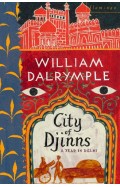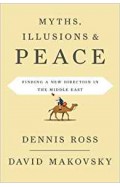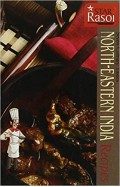The Resourceful Fakirs - Three Muslim Brothers at the Sikh Court of Lahore
By: Fakir Syed Aijazuddin
-
Rs 11,335.50
- Rs 12,595.00
- 10%
You save Rs 1,259.50.
Due to constant currency fluctuation, prices are subject to change with or without notice.
Between 1801 and 1839, under Maharaja Ranjit Singh, the Punjab was welded for the first and only time in its tumultuous history into a unified kingdom. For a brief and glorious period, it was one of the most progressive and powerful empires in the world. The Resourceful Fakirs traces the history of this colourful period in an original and intriguing way—through the careers of three Muslim brothers who were courtiers at the Sikh Darbar of Lahore. Fakir Azizuddin, the eldest, served as the Maharaja’s indispensable spokesman and trusted negotiator in all the dealings Ranjit Singh had with the neighbours surrounding his kingdom, including the increasingly powerful British. It was a tribute to Azizuddin’s skill that throughout the 30 years of their association, he enjoyed the complete confidence of the canny Maharaja. Fakir Imamuddin, the second brother, held the keys to Govindgarh Fort (near Amritsar) where the fabled Sikh treasury and armoury were located. The youngest, Fakir Nuruddin, occupied a position of prominence at the court and, after Ranjit Singh’s death, acted as a member of the Regency Council during the minority of the young Maharaja Duleep Singh. Through the stories of these brothers emerges a remarkable portrait of the Sikh Empire at its zenith, before its spectacular fall. With rare portraits, maps and period photographs enhancing the text, this is fascinating and thoroughly researched history told in compelling prose.
Between 1801 and 1839, under Maharaja Ranjit Singh, the Punjab was welded for the first and only time in its tumultuous history into a unified kingdom. For a brief and glorious period, it was one of the most progressive and powerful empires in the world. The Resourceful Fakirs traces the history of this colourful period in an original and intriguing way—through the careers of three Muslim brothers who were courtiers at the Sikh Darbar of Lahore. Fakir Azizuddin, the eldest, served as the Maharaja’s indispensable spokesman and trusted negotiator in all the dealings Ranjit Singh had with the neighbours surrounding his kingdom, including the increasingly powerful British. It was a tribute to Azizuddin’s skill that throughout the 30 years of their association, he enjoyed the complete confidence of the canny Maharaja. Fakir Imamuddin, the second brother, held the keys to Govindgarh Fort (near Amritsar) where the fabled Sikh treasury and armoury were located. The youngest, Fakir Nuruddin, occupied a position of prominence at the court and, after Ranjit Singh’s death, acted as a member of the Regency Council during the minority of the young Maharaja Duleep Singh. Through the stories of these brothers emerges a remarkable portrait of the Sikh Empire at its zenith, before its spectacular fall. With rare portraits, maps and period photographs enhancing the text, this is fascinating and thoroughly researched history told in compelling prose.
The Resourceful Fakirs - Three Muslim Brothers at the Sikh Court of Lahore
By: Fakir Syed Aijazuddin
Rs 11,335.50 Rs 12,595.00 Ex Tax :Rs 11,335.50
Zubin Mehta: A Musical Journey (An Authorized Biography)
By: VOID - Bakhtiar K. Dadabhoy
Rs 525.00 Rs 1,050.00 Ex Tax :Rs 525.00
Myths Illusions and Peace: Finding a New Direction for America in the Middle East
By: Dennis Ross
Rs 985.50 Rs 1,095.00 Ex Tax :Rs 985.50
The Origins of Political Order From Prehuman Times to the French RevolutioN
By: Francis Fukuyama
Rs 3,505.50 Rs 3,895.00 Ex Tax :Rs 3,505.50
Manning Up: How the Rise of Women Has Turned Men into Boys
By: Kay Hymowitz
Rs 746.25 Rs 995.00 Ex Tax :Rs 746.25
The Obama Syndrome: Surrender At Home War Abroad
By: Tariq Ali
Rs 1,165.50 Rs 1,295.00 Ex Tax :Rs 1,165.50
The Quest For Meaning: Developing A Philosophy Of Pluralism
By: Tariq Ramadan
Rs 1,185.75 Rs 1,395.00 Ex Tax :Rs 1,185.75
No recently viewed books available at the moment.
Zubin Mehta: A Musical Journey (An Authorized Biography)
By: VOID - Bakhtiar K. Dadabhoy
Rs 525.00 Rs 1,050.00 Ex Tax :Rs 525.00
The Resourceful Fakirs - Three Muslim Brothers at the Sikh Court of Lahore
By: Fakir Syed Aijazuddin
Rs 11,335.50 Rs 12,595.00 Ex Tax :Rs 11,335.50













-120x187.jpg?q6)








-120x187.jpg?q6)





